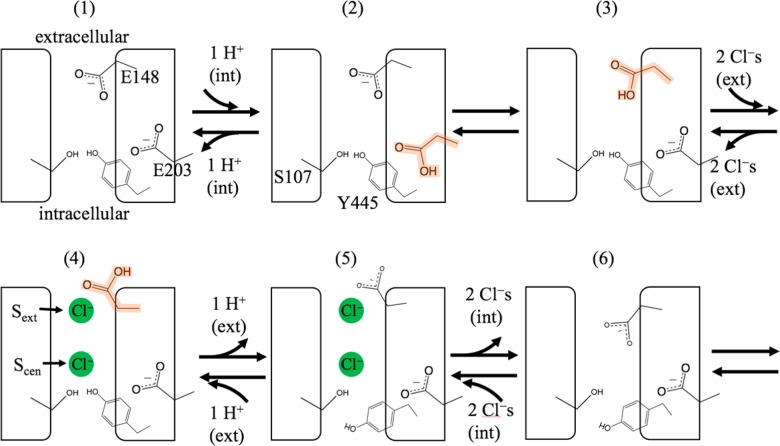Figure 2.
Schematic of the Cl–/H+ antiport mechanism proposed by Basilio et al.,1,6 with numbered conformation of the protein representing a distinct “state”. Double-arrows indicate that both transport directions are possible. In this work, we define a “positive” transport direction as Cl– transport from extracellular to intracellular bulk (with H+ transport in the opposite direction). In the postulated mechanism above, the “positive” direction corresponds to moving between states in the following order: from an initial state (1) with both E148 and E203 deprotonated, E203 is protonated by a proton from the intracellular solution moving to state 2. To create state 3, a proton is transferred from E203 to E148. While E148 is protonated (highlighted orange), two Cl– ions enter the protein from the extracellular solution and bind to Sext and Scen to create state 4. With these chloride ions present, E148 is deprotonated and H+ is released to the extracellular solution to create state 5, which also involves the opening of the internal gate at Y445 (also called Tyrcen) by the conformational change of helix O (not shown here). State 6 is reached after two Cl– ions at Sext and Scen are released to the intracellular solution. To return to the initial state and complete the cycle, the internal gate at Y445 closes.

